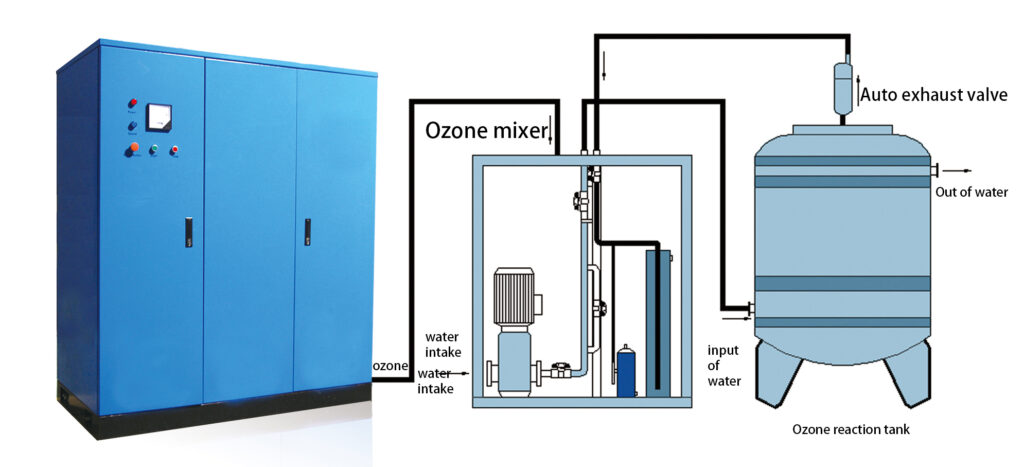Effect of Ozone Outlet Concentration on Ozone Disinfection and Sterilization Effect
The concentration of ozone in water is directly related to the killing rate of bacteria. There is a threshold for ozone disinfection and sterilization of water. Generally, the remaining ozone concentration in the water reaches 0.3mg/L, and the bacterial and fungal propagules in the water will be killed instantly in a few minutes. Water-soluble viruses are easier to kill.
The so-called residual ozone concentration refers to the ozone concentration remaining in the water after using ozone to oxidize organic matter, microorganisms and other oxidizable substances in the water. Generally, after ozone is added to water, the concentration measured after 10 ل 30 minutes can be considered as the remaining ozone concentration.
To sum up, generally after hollow fiber ultrafiltration and reverse osmosis membrane filtered water, the residual ozone concentration reaches 0.3~0.6 mg/L, and the total number of E. coli and bacterial colonies can reach zero indicators. As long as secondary re-contamination (such as contamination of bottles and caps) is prevented, the microbial indicators will not be a big problem. However, it is difficult to kill fungal spores and algae spores. It takes 0.8~1 mg/L to kill.

Process Design Process
Raw water → Raw water booster pump → Multi-media filter → Activated carbon filter → Ion exchanger → Security filter → Multi-stage high-pressure pump → RO reverse osmosis system → Ozone disinfection and sterilization → Pure water tank → Fully automatic barrel/bottle water filling Assembling production line → packaging → warehousing
How to sterilize purified water/mineral water
There are two main sterilization methods for purified water/mineral water: one is ultraviolet sterilization, and the other is ozone sterilization. Due to its weak sterilization intensity and no delayed sterilization effect, the number of manufacturers using ultraviolet sterilization in this industry is gradually decreasing. More and more manufacturers are choosing to use ozone sterilization.
The principle of ozone disinfection is that ozone undergoes a redox reaction in water to produce monoatomic oxygen (O) and hydroxyl (OH) with extremely strong oxidizing power, which instantly decomposes organic matter, bacteria and microorganisms in the water. Hydroxyl (OH) is a strong oxidant and catalyst that can cause chain reactions of organic matter, bacteria and microorganisms. Hydroxyl (OH) has a strong killing effect on various pathogenic microorganisms. It has strong killing power against tenacious microorganisms such as viruses and spores.
 ماكس مولد الأوزون
ماكس مولد الأوزون
